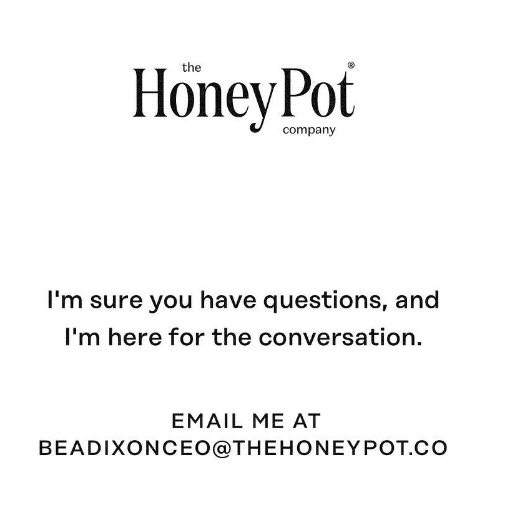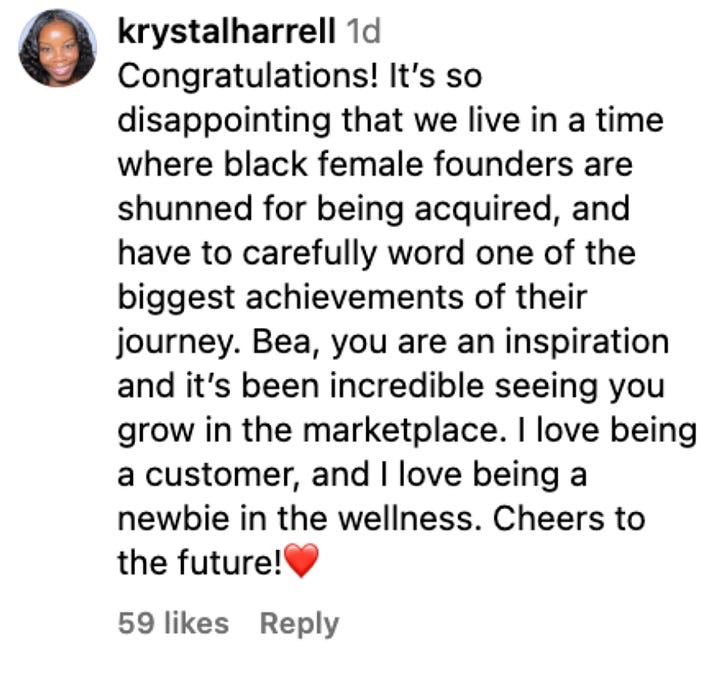The World is OK with Us Not Being OK
Honeypot, toddler makeup & the women's health/hysteria gap
This week, Kate Moss got a letter from AARP
Old Influencers are Getting a Young Audience
50+ year old influencers are getting young followings, but marketers don’t see it.
“Can a 55-year-old sell skin care to a 28-year-old?... No one had thought to try.”
According to @grayhairandtattoos “92% of (my) audience is 18-35 but marketers don’t get that though… I’m in this weird vortex of having an audience but no one knows I have (it).”
“We looked like we were rich”
With age may come a difficult influencer issue: ethics. Lyn Slater of @iconaccidental got her following, then found the perfectionism and how “we looked like we were rich” problematic. This led her to go less aspirational on her content and to write her refreshingly titled book.
This is great news: Fighting ageism must be intergenerational. If younger people see age differently, things will change.
This didn’t sink in to the reporter entirely, writing that the influencers are in danger of seeming to “want to hawk menopause medication or other old-people products.”
Thank God a Deserving Woman is Getting Her Bag
Honeypot took in $380M from Compass Diversified as a majority stakeholder. This is a bright sport in an apocalyptic era for CPG.
I interviewed CEO/Founder Bea Dixon a couple of years ago. She was deeply Teflon in her approach to building this business to create real change. And she educated me on the pressure to not “sell out” in the Black Community. You can feel this in her response to this major news. And vice versa:


Blessings to Bea Dixon and her team as they continue on, since Compass has no personal care in their portfolio. IYKYK. Diversfying, indeed. Will be interesting to watch.
Clean, plant-based, gluten-free, no sugar, keto-friendly, things and stuff
Of course plant-based has been marketed into meaninglessness.
But what about “clean” beauty?! Ask Sephora and Target, who are both getting sued over it. Why just them?
TRENDING:
YAWN, a makeup and skincare brand for children ages 3 & up has launched.
Read that again.
It’s all the usual non-tox claims plus a PR angle that the founder did product dev with her toddler and kindergartener. She is ex-Jones Road (early days) and it shows in the kiddie multitasking makeup stick. 🤮 Minimalist beauty for pre-K!
Saved the long form for last:
Women suffer, World ok with it – McKinsey
This week’s health gap study by the World Economic Forum + McKinsey builds a case for what many of us know:
The world is totally OK with female suffering—even though Big Medicine, Pharma, Insurance and the economy at large could make money from changing the status quo. (Paraphrasing.)
To catch you up:
Women go to doctors, men don’t.
Women are 33% more likely to visit a physician & 100% better (CDC stat, not mine) at preventative care and measures.
So why do women spent 25% more of our lives in “poor health” — up to 9 years.
The report lays plain what anyone engaged in women’s health knows already:
Women are more often misdiagnosed and diagnosed more slowly—as in, years later— than men. (there’s a 7x gap for heart disease, for example)
Why?
We don’t present like men.
Our health isn’t well studied.
“Male” disesases are overfunded, “female” are underfunded.
There is both a failure to study what is disproportionately female, exclusively female and diseases that hit men and women—but from a female health POV.
Hysteria, while removed as a medical diagnosis from the DSM in 1980 (?!), lives on in the medical gaslighting community as “it’s normal,” “it’s all in your head,” “it’s just stress,” “you’ll get through it.”
Nearly 4 years in the menopause space gave me countless examples of the above from women across the socioeconomic spectrum.
“Women’s health is often simplified to include only sexual and reproductive health”
It’s not all periods & ladybits
The report said it aloud: “Women’s health is often simplified to include only sexual and reproductive health.” Our biggest killer is heart disease.
Yet the report also notes issues like endometriosis and perimenopause are little understood or diagnosed and each is a $200+B opportunity.
Which brings us to…
The GDP Top 10
The lede is, of course, was financial: According to McKinsey, closing this health gap would add $1 trillion in global GDP, as 50% of the issues are felt during women’s prime working years.
The newest take in this report was a Top 10 issues that could contribute to GDP list.
Seven fall into the “let them suffer” category: PMS, anxiety, depression, asthma, migraines, osteoarthritis and drug-use disorders.
The authors also estimated that if menopause had adequate data for inclusion (it doesn’t), it would be #2 behind PMS.
While this was not in report, it’s hard not to see how many of these tie back to systemic issues. If we lived in a different world, would depression, anxiety, migraines, even anxiety which is stress triggered – be as gendered as they are?
ROI is beside the point
What is the most confounding and irritating fact of this is that it does not make business sense. The report states that for every $1 invested, ~$3 is projected in economic growth.
Three is an unholy number in this space: Female founding teams get only 3% (or less) of capital and Femtech gets only 3% of healthcare investment. And to the McKinsey report, what is Femtech anyway when much of what we deal with our diagnoses & treatment differently than men but in 43% of the cases, it’s more bias than biology.
So now what?
The recommendations are depressingly familiar, too. It’s like any “How to Reduce Stress, Tighten Abs, Lose Weight, Get Organized, Earn Your Cat’s Approval” listicle: Always same tactics, yet no one does them.









